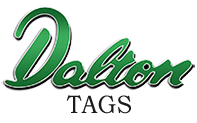BVD – Strategies for Eradication
BVD – Strategies for Eradication
As a producer, herd health may be the number one factor contributing to the bottom line in cattle farming operations. Bovine Viral Diarrhea (BVD), a viral disease with a host of symptoms, has become a major factor determining the overall wellness of herds worldwide and specifically in the UK. Infertility, pneumonia, still birth, weak or deformed calves, immunodepression, poor growth, and as the name implies, diarrhea are just some of the deleterious effects on an infected herd.
Voluntary efforts to eradicate BVD from cattle populations have recently proven to be a boon to producers as they seek to minimise the impact of the economic loss caused by the virus. In Northern Ireland, for example, over a two year period as testing became mandatory in 2016, these efforts have seen a 25% decrease in BVD infections. While clinical signs of the disease may be highly variable, vectors of transmission, in utero and after birth, are widely accepted and successful attempts at eradication use a multi-pronged approach. Enhanced biosecurity, targeted vaccinations, and elimination of persistently infected (PI) cattle are at this time the recognised strategy to combat BVD in cattle populations.
Generally speaking, it goes without saying that you can avoid BVD by not bringing it in. This is where strict biosecurity measures come into play on the farm. Testing new purchases for BVD, isolation, and quarantine should always be a part of any farm protocol when disease is at issue.
Perhaps most importantly, localisation and culling of persistently infected individuals are at the top of the list for BVD control. At this time, the polymerase chain reaction or PCR is the most sensitive diagnostic tool available for detecting BVD. Ongoing screening as well as pre-purchase and recent purchase screening to target PI cattle is of the utmost importance. Though, producers should also consider PCR diagnostics to evaluate vaccinations protocols and in the case of regulatory and/or sale and export controls. PCR testing requires tissue sampling and the most cost effective and labor saving technique, in our opinion, is via cattle tagging using Dalton Tags BVD Tag & Test Tags.
Since all cattle require tags, it makes economic sense to combine BVD surveillance with mandatory tagging. Our FLEXO tags save labor by their unique dual purpose design. Incorporated into their design is a vial for tissue sample collection which seals the sample with appropriate laser labeling for shipment to the lab. With one applicator, the simple task of tagging becomes a means for improved herd health in terms of production, fertility and reproduction, growth rates, and reduced vet costs in light of the widespread pervasiveness of BVD infected cattle. The FLEXO range of tags have also been regarded as the best quality tags on the market with a verified 99% retention rate. Fewer replacement tags, less labor and happier, healthier cows through BVD surveillance programs provide lower production costs, increased feed conversion and thus an increase in economic gain over the long term!


